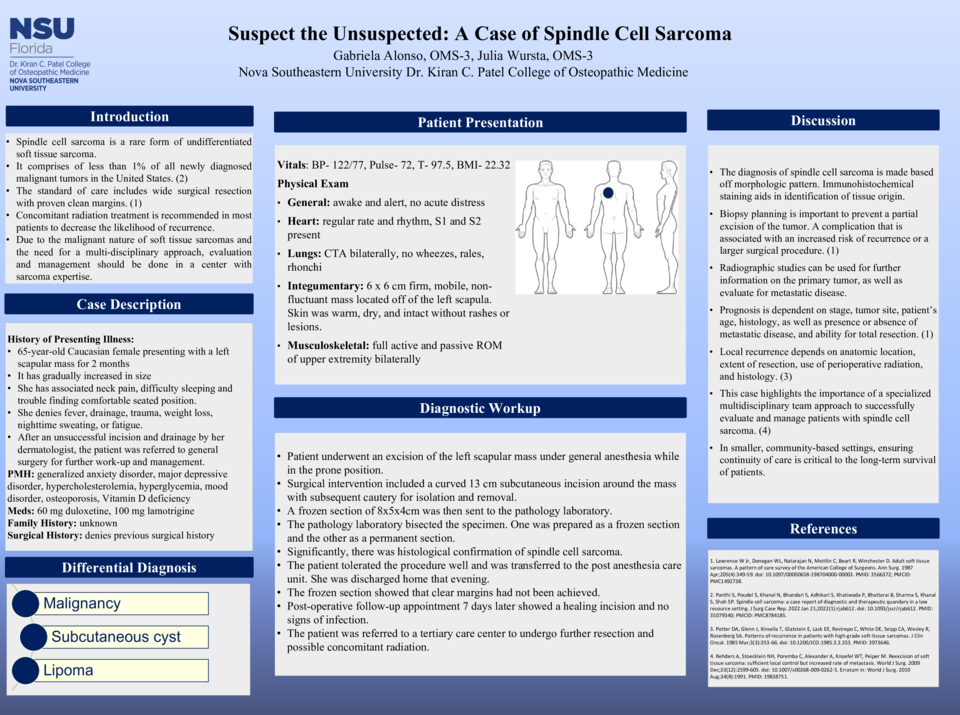Abstract
Introduction: Soft tissue sarcoma, a cancer that originates from soft tissue structures such as muscle, fat, bone, or fibrous or connective tissue, is an already unusual diagnosis that comprises less than 1 percent of all newly diagnosed malignant tumors in the United States. Spindle cell sarcoma is a rare form of undifferentiated soft tissue sarcoma, histologically composed of long and slender spindle cells. The standard of care includes wide surgical resection of the primary tumor with proven clean margins, which is a necessity in curing this disease. Concomitant radiation treatment is recommended in most patients to decrease the likelihood of recurrence and increase long-term survival. Due to the malignant nature of soft tissue sarcomas and the need for a multi-disciplinary approach, evaluation and management should be done in a center with sarcoma expertise.
Case Description: We present a case of a 65-year-old Caucasian female complaining of a left sided scapular mass that she first noticed 2 months prior which had since increased in size. After an unsuccessful incision and drainage by her dermatologist, the patient was referred to general surgery for further work-up and management. The patient endorsed associated neck pain, difficulty sleeping, and trouble finding comfortable seated positions. She denied fever, drainage, previous trauma to the area, unexplained weight loss, nighttime sweating, or fatigue.
Upon initial physical examination in the office, vitals were stable and the patient was in no acute distress. Notably, we discovered a 6x6cm firm, mobile, and non-fluctuant mass located off of the left posterior chest wall and scapula. Her skin was warm, dry, and intact without rashes or lesions. Differential diagnosis included malignancy, subcutaneous cysts, and lipoma.
The patient underwent an excision of the left scapular mass under general anesthesia while in the prone position. Surgical intervention included a curved 13cm subcutaneous incision around the mass with subsequent cautery for mass isolation and removal. A frozen section of 8x5x4cm was then sent to the pathology laboratory. Significantly, there was histological confirmation of spindle cell sarcoma. At this point in time, it was unclear whether or not clear margins were successfully achieved. The patient tolerated the procedure well and was transferred to the post anesthesia care unit. She was discharged home that evening.
Post-operative follow-up appointment 7 days later showed a healing incision and no signs of infection. Due to the uncertainty of whether or not clear margins were achieved, the patient required referral to a tertiary care center to undergo either a wide local excision or radiation.
Discussion: This case highlights the importance of a specialized multidisciplinary team approach to successfully evaluate and manage patients with spindle cell sarcoma. In smaller, community-based settings, ensuring continuity of care is critical to the long-term survival of patients.






